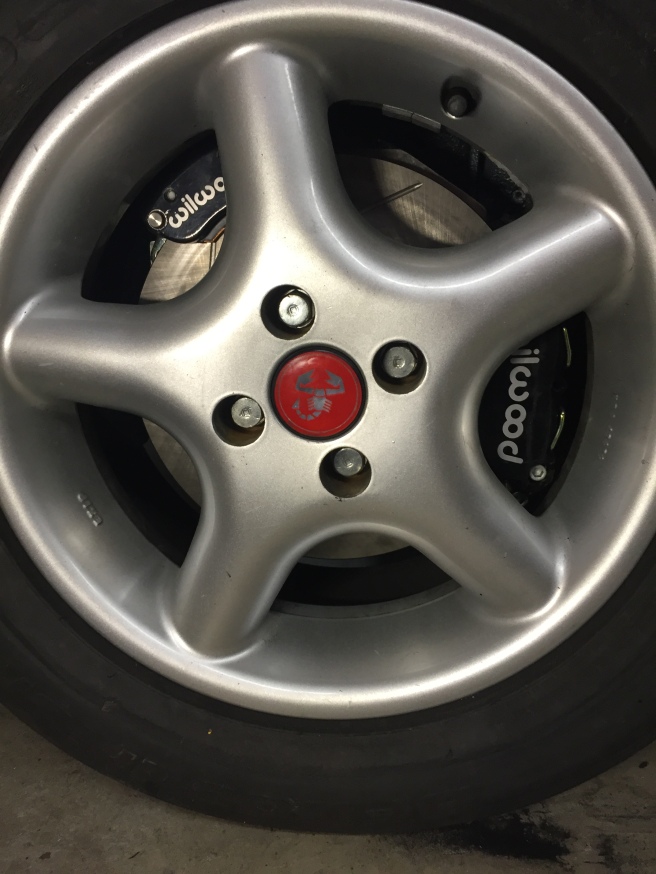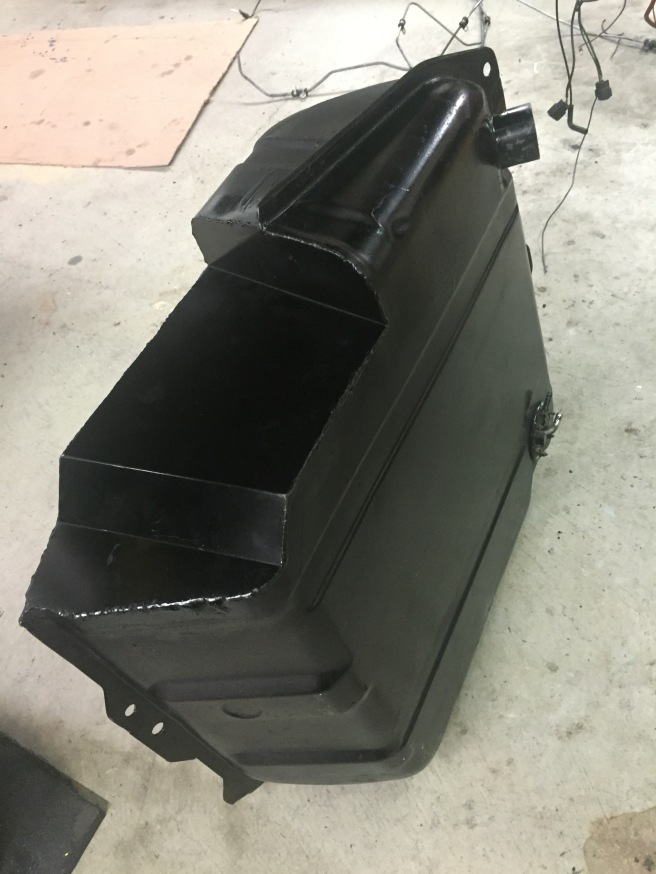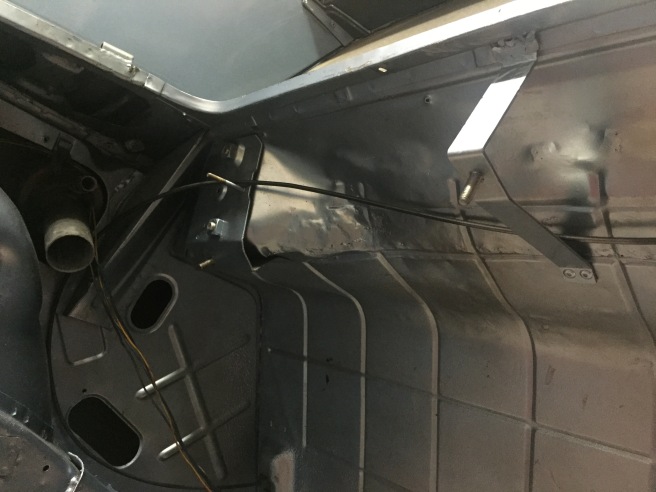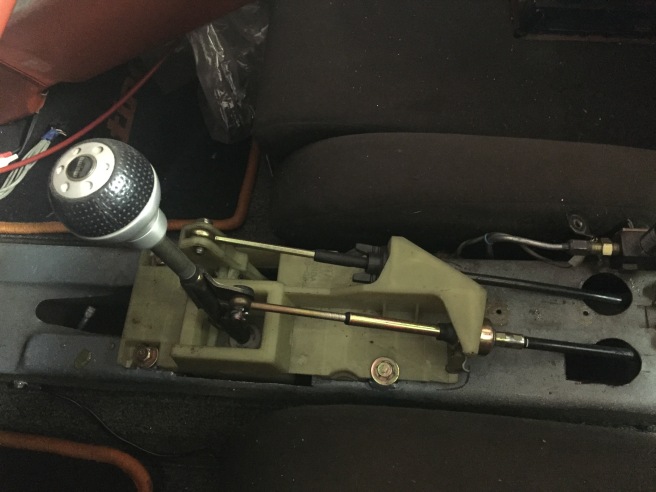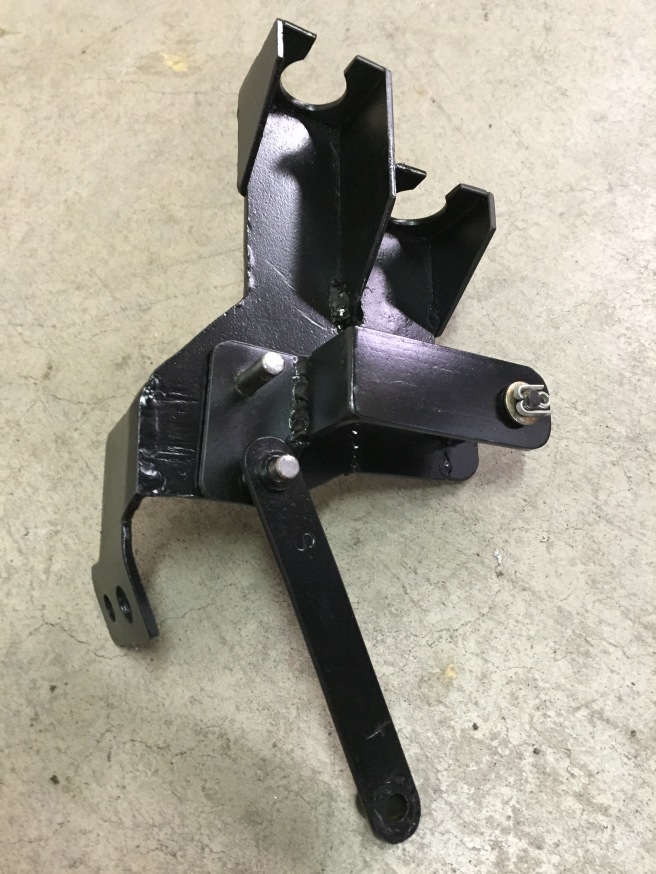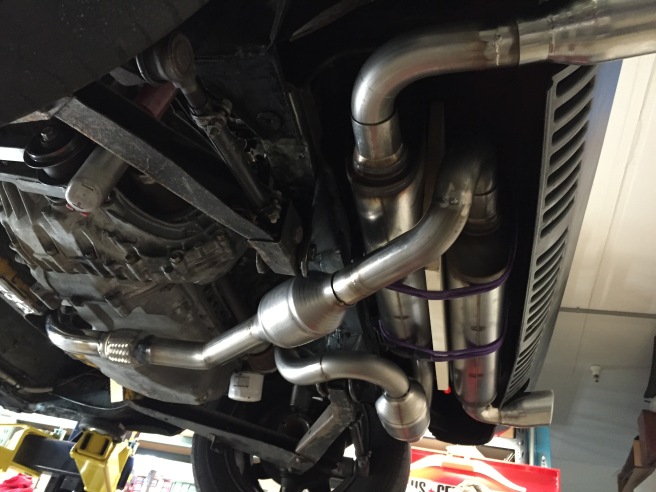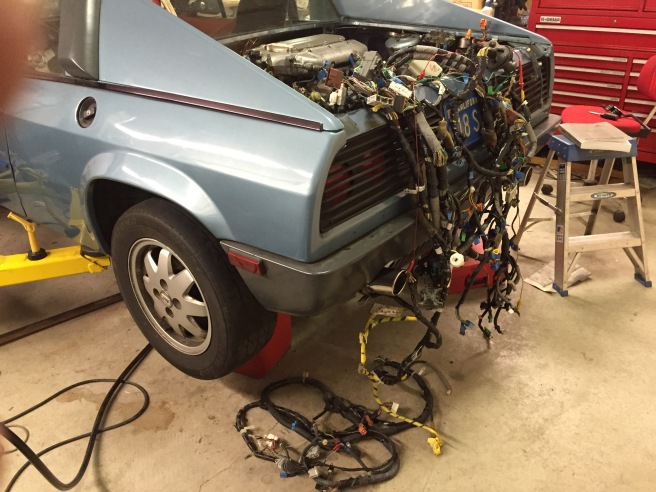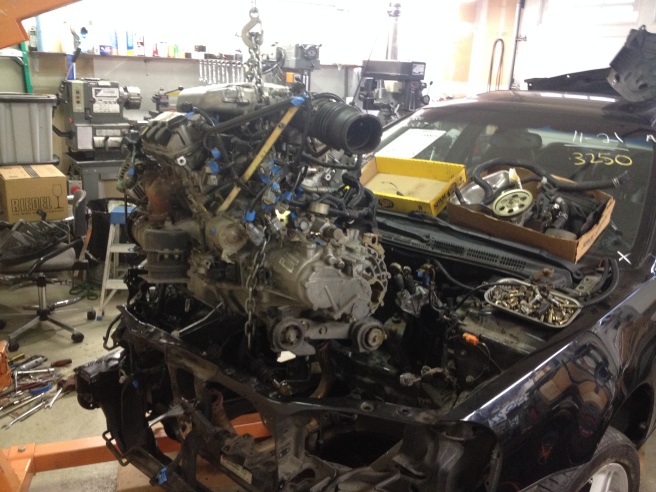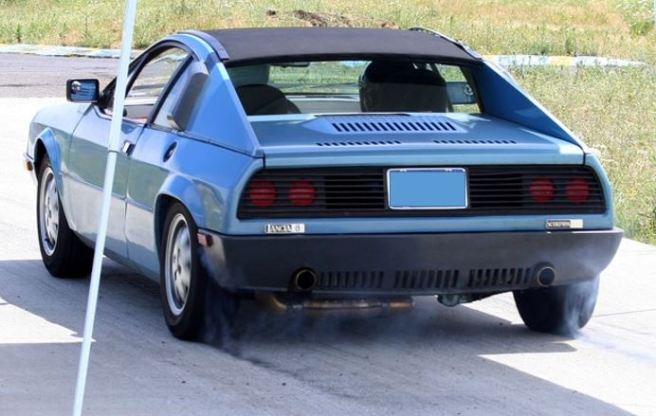Brakes – one of the major weak points of the Scorpion. Power brakes on the front wheels only (where there is no weight), what were they thinking !?! Plus 9″ diameter non-vented rotors are totally inadequate for any significant horsepower boost. I was previously running 10″ vented rotors from a 2nd series Toyota MR2 Turbo at all 4 corners with reasonably good results, even at demanding tracks like Laguna Seca. For better pedal feel and adjustability, I’ve swapped out the original brake & clutch pedal assemblies with a Tilton pedal assembly, featuring dual master cylinders and a balance bar which allows front/rear brake proportioning.
To further improve heat capacity and control, I started a search for uprated rotors and calipers. As an educated guess, I bought a Stoptech front rotor for a current generation FIAT 500 Abarth, and found that it fits the Scorpion hub perfectly! I will be using these (11.1″ directionally vented) at all 4 corners, along with Wilwood 4-pot calipers (rear-heavy cars like the Scorpion can take advantage of large brakes at the rear). Wilwood makes a small mechanically operated parking brake caliper, which solves one of the problems when fitting racing brakes on a car that sees street duty. I had to add a spacer to the parking brake since it was designed for a slightly thinner rotor. The rear caliper bracket is shown below.
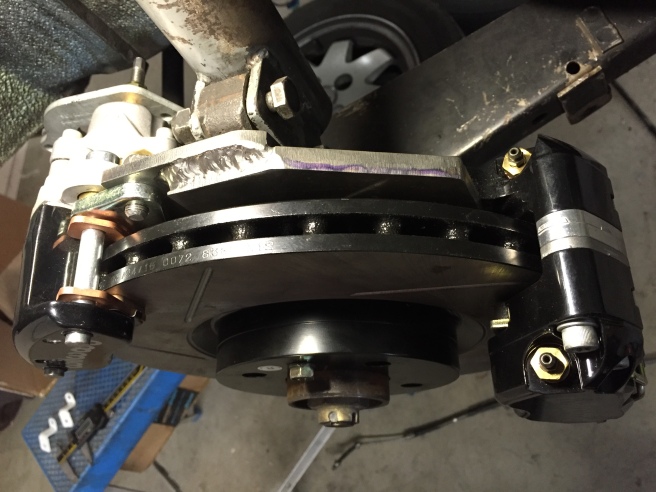
September 2016 update:
Shopping for 16″ & 17″ wheels to fit the new brakes, and not finding anything I like so far. Is is just me, or are new wheels all over-the-top complicated? I want something that complements the Scorpion styling and isn’t trying to steal all the thunder. Plus, a wheel that can be cleaned in minutes, not 10’s of minutes or more. Just for fun, I mounted my 15″ Exip track wheels on the car, and was amazed to find that they fit! The clearance to the wheel weights is almost nothing, but that’s solvable. Here they are:
